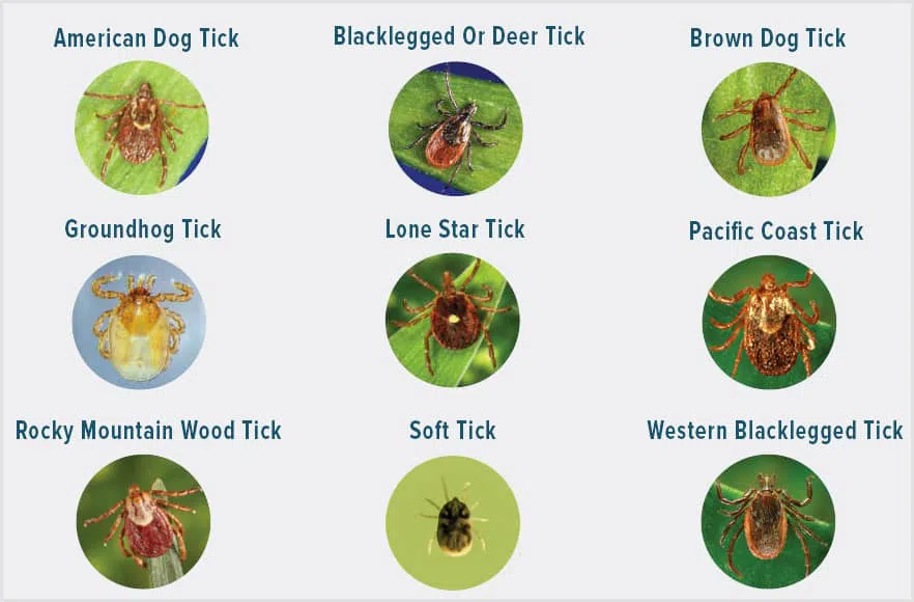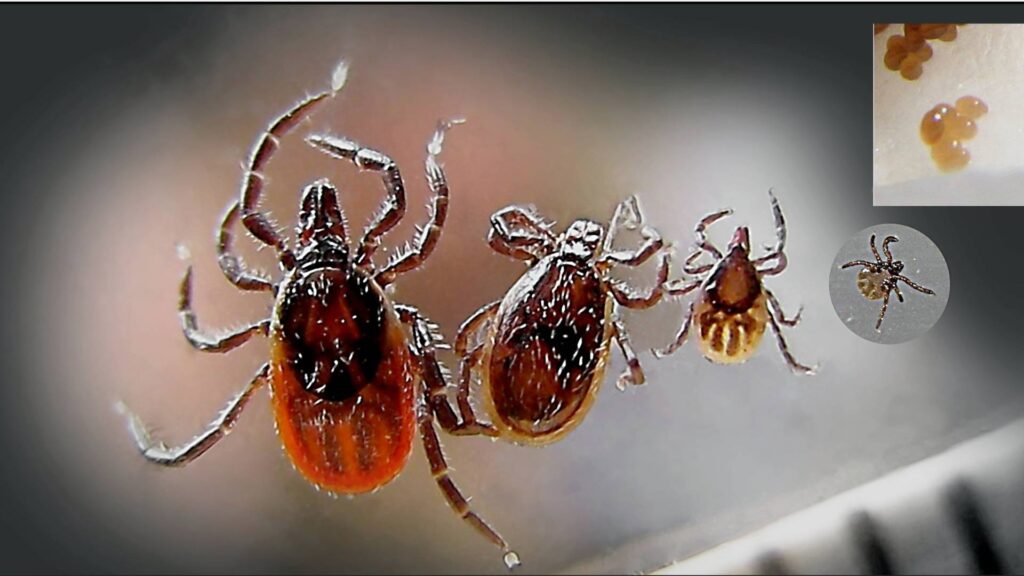Florida’s subtropical environment featuring year-round warmth, steady humidity, and mild winters allows ticks to stay active, feeding on warm-blooded hosts and reproducing almost continuously. In Pompano Beach, a popular coastal area in South Florida, these parasitic arachnids can infiltrate single-family homes, vacation rentals, or commercial sites if occupant or property manager vigilance lapses. This page covers why ticks thrive in Florida, how to spot possible infestations, and why contacting a professional tick exterminator for tick treatments is critical to safeguard people, pets, and guests from ongoing bites or potential tick-borne ailments.
Whether you manage a home in Pompano Beach or run rentals that welcome a rotating stream of visitors, identifying ticks early and deploying targeted, multi-phase solutions protects residents, animals, and customers from itchy bites, disease risks, and unending do-it-yourself tries that frequently ignore hidden eggs or newly hatched ticks residing in shady yard spots, carpet seams, or pet bedding.
Why Ticks Flourish in Florida
Mild Winter Temperatures
In northern states, frigid winters naturally diminish or kill ticks for months. Florida’s gentle cold season seldom plunges below freezing, letting ticks feed and lay eggs outdoors or indoors consistently. Climate-controlled interiors (65–85°F) eliminate seasonal slowdowns in each tick stage egg, larva, nymph, adult unless occupant or professional measures curb them.
Ample Humidity & Moisture
Ticks rely on moisture at several life stages. Florida’s frequent rain, lawn irrigation, and inherent humidity keep yard soils or shady corners damp enough for tick eggs or larvae to hatch. Even minimal indoor moisture like AC condensate supports ticks unless occupant synergy or exterminator solutions disrupt their life cycle.
Numerous Warm-Blooded Hosts
Ticks feed on dogs, cats, local wildlife (opossums, raccoons), and occasionally humans. In Pompano Beach, where many people have pets, ticks easily attach to animals roaming lawns or park areas, dropping eggs indoors if occupant or manager checks go overlooked.
Constant Movement of Goods & People
Florida’s relocations, short-term lodging, and occupant turnover commonly shuffle personal belongings, secondhand furniture, or suitcases potential vehicles for ticks. In multi-unit residences or rentals, occupant or manager oversight might allow ticks to spread if occupant detection or housekeeping is minimal.
Continuous Tick Life Cycle
A single female tick lays numerous eggs, each evolving from egg to larva, nymph, then adult. Without occupant or professional coverage addressing each stage, newly hatched adult ticks keep surfacing, frustrating occupant tries that kill only visible adults or skip hidden eggs.

Indicators of a Tick Infestation
- Persistent Pet Scratching or Chewing
- Dogs or cats gnawing incessantly at hind legs, tail bases, or ears—hotspots for ticks to latch.
- A flea/tick comb might reveal small, dark ticks or blackish dirt (tick droppings) in pet fur.
- Dogs or cats gnawing incessantly at hind legs, tail bases, or ears—hotspots for ticks to latch.
- Unexplained Bites on Lower Legs
- Ticks often bite around ankles or calves if they leap from grass or floor-level surfaces.
- If bed bugs or fleas are ruled out, consistent lower-leg bites strongly suggest ticks.
- Ticks often bite around ankles or calves if they leap from grass or floor-level surfaces.
- Tick Dirt
- Pepper-like black flecks on pet bedding, rugs, or fur dried blood excrement from feeding ticks.
- Reddish-brown smears when dabbed with water verify its blood residue.
- Pepper-like black flecks on pet bedding, rugs, or fur dried blood excrement from feeding ticks.
- Indoor Tick Sightings
- Brown dog ticks can fully develop inside, breeding in carpet seams, behind baseboards, or on pet beds.
- Observing multiple ticks indoors signals a deeper infestation requiring professional solutions.
- Brown dog ticks can fully develop inside, breeding in carpet seams, behind baseboards, or on pet beds.
- Pet Weakness or Anemia
- Substantial tick loads can deplete enough blood to fatigue animals. Smaller pets or kittens/puppies are especially vulnerable.
- A veterinarian might confirm ticks if the occupant or manager sees no other parasite explanation.
- Substantial tick loads can deplete enough blood to fatigue animals. Smaller pets or kittens/puppies are especially vulnerable.
- Wildlife Visiting Yards
- Opossums, stray cats, or raccoons crossing lawns often deposit ticks in shady yard patches.
- Pets or occupant traffic can bring these newly hatched ticks inside, broadening the infestation unless occupant synergy and exterminator help comes into play.
- Opossums, stray cats, or raccoons crossing lawns often deposit ticks in shady yard patches.
Why Ignoring Ticks Is Hazardous
Disease Transmission
Ticks can carry pathogens like ehrlichiosis or Rocky Mountain spotted fever, potentially infecting pets or humans if ticks remain attached for too long. Early detection and removal cut these health threats dramatically.
Persistent Bites & Occupant Stress
Ticks embed for extended feeding sessions, causing occupant or pet anxiety and persistent biting. Overlooking eggs or pupae spurs occupant annoyance if new ticks continuously appear. Without occupant synergy or professional coverage, occupant frustration mounts.
Year-Round Lifecycle
Florida’s mild winter fosters multiple tick generations. Pupae lie dormant, awaiting host cues (CO₂, vibrations) to emerge, meaning occupant or manager attempts focusing on adults alone typically fail if occupant synergy doesn’t target pupal stages.
Repeated DIY Costs & Labor
Untended ticks force occupants to re-launder bedding, vacuum incessantly, or buy store solutions. Partial occupant steps typically kill visible adults, missing eggs or newly hatched ticks quickly re-infesting occupant spaces.
Pet Health & Brand Issues
Beyond itching, ticks pose tick-borne diseases for pets. Short-term lodging owners near Pompano Beach risk occupant complaints or negative reviews if ticks greet guests, hindering occupant confidence.

Why a Professional Tick Exterminator Is Essential
Comprehensive Coverage of All Life Stages
A tick exterminator typically uses insect growth regulators (IGRs) plus adulticidal treatments, annihilating ticks at egg, larva, nymph, adult phases. Single-step occupant tries usually handle visible adults only, ignoring hidden eggs or pupae that hatch soon after occupant relief.
Thorough Yard & Indoor Inspections
Experts search shady yard nooks, mulched edges, or moist soil for tick eggs/larvae, then inspect carpets, pet crates, or furniture inside for adult ticks. Accurate location of all breeding pockets ensures occupant or pet chemical contact remains limited while guaranteeing lethal coverage.
Safe & Regulated Insecticides
Random occupant pesticide usage can endanger occupant or pet health by saturating living spaces. Exterminators precisely apply adulticides or IGRs near yard edges or baseboard seams common tick hotspots combined with mechanical removal (vacuuming, steam) for adult ticks or eggs in deeper nooks.
Pet-Focused Measures
Occupants consistently use vet-approved flea-and-tick preventative collars, topicals, or oral meds year-round, denying newly hatched ticks a feeding route. Grooming or combing animals regularly unearths leftover ticks quickly, removing them before reproduction escalates.
Follow-Up & Assurance
Eggs often hatch 2–3 weeks after the occupant sees initial improvement. Many exterminators re-check occupant calls or yard corners if occupant concerns persist, delivering additional occupant housekeeping tips or spot treatments guaranteeing leftover pupae or newly introduced ticks don’t reemerge. Occupants finish reassured that ticks are fully eliminated.
Typical Methods for Tick Treatments
- Inspection & Infestation Level
- Exterminators explore damp, shady yard corners for ticks or eggs, and interior carpets, pet bedding, or furniture for adult ticks.
- Determining yard vs. indoor emphasis clarifies coverage needed across each tick phase.
- Exterminators explore damp, shady yard corners for ticks or eggs, and interior carpets, pet bedding, or furniture for adult ticks.
- Vacuuming & Steam
- Occupants or pros vacuum carpets, rugs, furniture to remove adult ticks, eggs, or larvae swiftly.
- Steam kills ticks on contact penetrating deeper layers minus chemical residues.
- Occupants or pros vacuum carpets, rugs, furniture to remove adult ticks, eggs, or larvae swiftly.
- Insect Growth Regulators (IGRs)
- IGRs restrict larvae from maturing into egg-laying adults, halting fresh breeding waves.
- Typically paired with adulticides that kill present adult ticks, guaranteeing full lifecycle coverage.
- IGRs restrict larvae from maturing into egg-laying adults, halting fresh breeding waves.
- Outdoor Insecticides or Granules
- Exterminators apply tick-focused sprays or IGR-based granules around yard edges, fences, or under decks.
- Often moisture-activated, saturating hidden eggs or larvae in soil or leaf litter.
- Exterminators apply tick-focused sprays or IGR-based granules around yard edges, fences, or under decks.
- Indoor Chemical Treatments
- If brown dog ticks flourish indoors, regulated sprays or dust hamper concealed nymphs behind baseboards, in carpet seams, or near pet crates.
- Occupants commonly vacuum daily to remove newly emerged ticks, discarding contents outdoors.
- If brown dog ticks flourish indoors, regulated sprays or dust hamper concealed nymphs behind baseboards, in carpet seams, or near pet crates.
- Pet Flea-and-Tick Prevention
- Occupants keep animals on year-round topicals, collars, or oral meds as prescribed by veterinarians, preventing ticks from breeding freely on pets.
- Regular grooming or combing quickly detects leftover or newly arrived ticks, removing them pre-reproduction.
- Occupants keep animals on year-round topicals, collars, or oral meds as prescribed by veterinarians, preventing ticks from breeding freely on pets.
- Re-Check & Monitoring
- Pupae hatch 2–3 weeks after occupant sightings vanish, spawning new ticks if occupant synergy or re-check visits remain incomplete.
- Pupae hatch 2–3 weeks after occupant sightings vanish, spawning new ticks if occupant synergy or re-check visits remain incomplete.
Further occupant housekeeping or spot treatments finalize occupant comfort, ensuring leftover pupae or newly introduced ticks cannot reestablish infestations.

Service Area: Pompano Beach
Though ticks exist statewide, this page pinpoints Pompano Beach, where occupant synergy and specialized tick treatments remain essential for eradicating or deterring major outbreaks. Florida’s mild winter rarely disables tick feeding or breeding cycles, so occupant readiness plus professional extermination ensure total or near-total coverage to keep ticks from repeatedly returning.
Why Choose Us
Florida-Specific Solutions
We combine recognized tick management like insect growth regulators, occupant synergy focusing on pet care, and yard insecticides fine-tuned to Florida’s environment. Occupant housekeeping (vacuuming, laundering on hot cycles) plus advanced exterminator coverage eliminates ticks from egg to adult, surpassing occupant tries that skip hidden pupae or newly hatched ticks.
Thorough Yard & Indoor Reviews
Before applying insecticides or IGRs, technicians meticulously inspect shady lawn corners or damp soils plus indoor carpets, furniture cracks, or pet bedding for ticks or eggs. Knowing every breeding site shapes occupant or pet chemical usage precisely, lowering occupant exposure while ensuring lethal coverage.
Safe & Regulated Chemicals
Occupant overspraying can harm occupant or pet health. Exterminators place licensed adulticides/IGRs in yard edges or carpet seams and tick hotspots supplemented by mechanical removal (vacuuming/steam). Occupants can trust occupant or pet chemical contact is minimized while guaranteeing lethal conditions for ticks.
Pet-Centric Collaboration
Occupants maintain year-round vet-approved flea-and-tick preventative collars, topicals, or oral meds blocking newly attached ticks from feeding or reproducing. Grooming or combing frequently helps occupant detection if leftover or newly arrived ticks appear, halting them before they multiply.
Follow-Up & Warranty
Eggs typically hatch 2–3 weeks post occupant relief. Many exterminators re-check occupant calls or remain on-call if occupant concerns reemerge, implementing spot treatments or occupant housekeeping tips so leftover pupae or newly introduced ticks do not reignite infestations. Occupants conclude confident that ticks are thoroughly gone.
Next Steps
Sensing persistent pet scratching, spotting black specks (“tick dirt”) on bedding, or noticing suspicious bites on ankles? Contact us to learn more or schedule your service. Our tick treatments in Pompano Beach combine yard or interior reviews, specialized insect growth regulators and adulticides, occupant-friendly housekeeping instructions, plus re-check visits completely destroying ticks at each life phase and preventing repeated outbreaks.
Act now to protect pets from tick-borne illnesses, maintain occupant comfort free from biting parasites, and spare occupant frustration with occupant do-it-yourself solutions ignoring eggs or pupae. Rely on our Florida-based tick exterminator prowess to discover, eliminate, and break ticks’ entire lifecycle, ensuring occupant peace under Florida’s mild winter climate that would otherwise foster tick feeding and reproduction nonstop.
